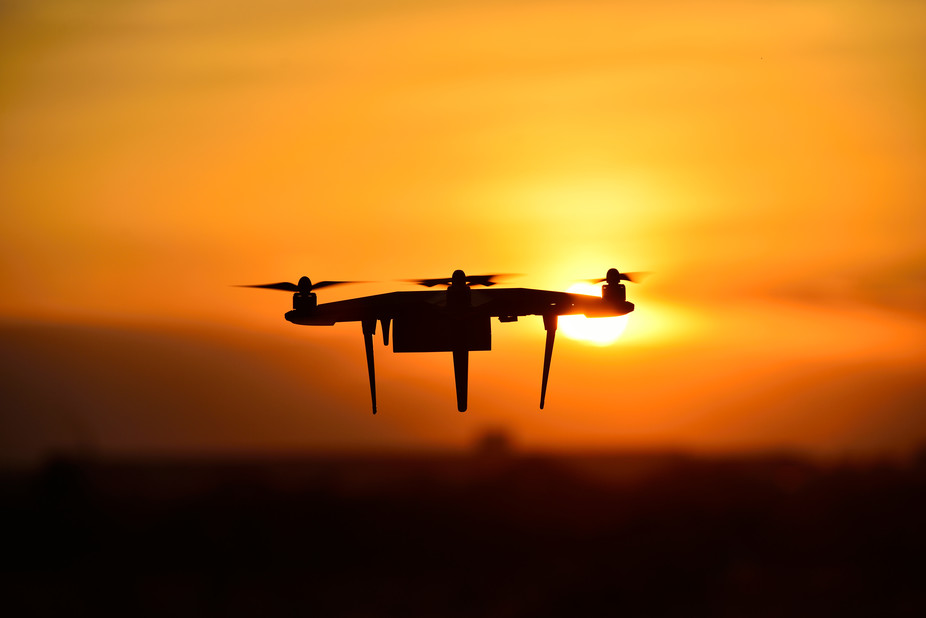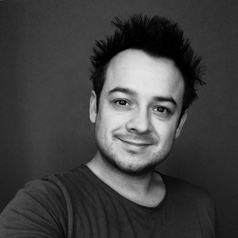Of the many technologies to have captured our imaginations over the last five years, there have been few with such lofty aspirations as drones. These high-tech flying machines have opened up new cultural pastimes which bring together hobbyist enthusiasm and a simple human curiosity to take to the skies.
In 2015, one of the largest commercial drone developers, DJI, was valued to be worth over US$10billion, while major media companies like Facebook and Google have been quietly acquiring drone manufacturers to further their aspirations of reaching the remaining world’s offline population by using high altitude drones to beam down data through lasers, giving those more remote communities a means of getting online.
But what are the big five applications that explain the proliferation of drones over this period, or which signal important contributions to our society?
Delivery
The great thing about drones is that they are small, fast, agile, self-guiding, and can carry things. Ever since Amazon’s first patent award for a drone delivery system in April 2015, we have seen new designs emerge and new applications imagined, including the company’s latest aspiration to create a blimp style drone carrier which will be able to deploy fleets of drones directly from the sky. Meanwhile companies like Flirtey have received approval for commercial drone delivery flights, for items ranging from Pizza delivery to bottled water, emergency food and first aid kits.
Other delivery designs have included life-ring drones, blood-delivery drones, and defibrillator “ambulance” drones – the prototypes of which show great success and clarity of use.
Filmmaking
In 2015, the world’s first Drone Film festival took place in New York, shortly followed by a number of others around the world. In the same year, the Drones for Good prize launched in Dubai, creating an annual US$1m prize for inventors to come up with some of the best drone applications. Finalists ranged from drones designed to map biodiversity, to a search and rescue drone which was its inaugural international winner.
Award winning filmmaker Liam Young created the first film shot entirely by drones, called In the Robot Skies. Artists are even putting 360 cameras onto drones and turning them into virtual reality perspectives, as in the case of award-winning Marshmallow Laser Feast’s In the Eyes of the Animal, which uses drones, LIDAR scanning, and VR to give a completely new perspective on the world.
Drone Racing
The United Arab Emirates created the world’s first Grand Prix Drone Racing event, with British teen Luke Banister winning its inaugural event in 2016 with a first prize pot of US$250,000. Since then an entire community of drone races have been popping up around the world, with the first professional race taking place in the UK at the 02 Arena in 2017.
Conservation
Drones also have the extraordinary capacity to occupy parts of our natural world that no other object can. These machines have been seized upon by environmental scientists to help us understand the natural world in ways that have never been possible before. For instance, primate biologist Serge Wich has been monitoring apes from above using a range of drone systems, while Neil Entwistle, of Salford University’s School of Environment and Life Sciences, has been mapping out flooding patterns in the UK to more effectively help us figure out how to protect ourselves against catastrophic weather.

Drones can also be used to track environmental changes. Thierry Weber/flickr, CC BY
Journalism
Journalists have also been quick off the mark to use drones. The Knight News Foundation project is developing a Drone Journalism operations manual to help reporters fly ethically and safely. And in countries where there is tight media control there is particular value in having drones to access places which have decreed off limits. In Turkey, for example, an activist allegedly had his drone shot down by police when he was trying to capture footage of demonstrations in Istanbul.
Hype?
Among all these amazing applications, there is also a lot of hype about where drones will take us. A lot is still very much in flux. Rules keep changing, freedoms to fly are being curbed in various countries, such as Spain, and there remains a concern about safety and how best to govern accountability. What’s more, it’s crucial to keep an eye on the links between the military and the consumer sector, as the overlaps are emerging – economically and politically.
There is already a push back against a world where we are surrounded by drones, such as the project No Fly Zone which lets US citizens try to protect the air space around their homes from drone intrusion. We also have a massive design problem in trying to actually figure out what a highway in the sky might look like.
But one thing is clear, the investment capital is there to sustain these applications for a long time to come and there is no sign of the number of applications diminishing so there’s still a great deal of change to expect ahead.
 Andy Miah received funding from Nesta, Arts Council England, and the AHRC in 2014 for a drone project, exploring Digital R&D for the Arts, in partnership with Marshmallow Laser Feast and Abandon Normal Devices.
Andy Miah received funding from Nesta, Arts Council England, and the AHRC in 2014 for a drone project, exploring Digital R&D for the Arts, in partnership with Marshmallow Laser Feast and Abandon Normal Devices.
This article was originally published on The Conversation. Read the original article.



 How virtual reality technologies are shaping an inclusive future for architecture
How virtual reality technologies are shaping an inclusive future for architecture  Blue Origin's New Glenn Rocket Launch Delayed to Thursday
Blue Origin's New Glenn Rocket Launch Delayed to Thursday  Taiwanese Chip Stocks Surge Amid AI Boom, TSMC Earnings in Focus
Taiwanese Chip Stocks Surge Amid AI Boom, TSMC Earnings in Focus  Zuckerberg Meets Trump Amid Meta's Strategic Shift
Zuckerberg Meets Trump Amid Meta's Strategic Shift  Quantum Computing Stocks Slide as Industry Faces Viability Questions
Quantum Computing Stocks Slide as Industry Faces Viability Questions  Trade Groups Push Back on Biden's New Chip Export Rules
Trade Groups Push Back on Biden's New Chip Export Rules  EV Sales Surge in 2024 as China Leads, Europe Stabilizes
EV Sales Surge in 2024 as China Leads, Europe Stabilizes  SEC Accuses Elon Musk of Securities Law Violation Over Twitter Stake Delay
SEC Accuses Elon Musk of Securities Law Violation Over Twitter Stake Delay  TikTok Braces for Possible US Shutdown This Sunday Amid Security Concerns
TikTok Braces for Possible US Shutdown This Sunday Amid Security Concerns  Artificial intelligence: what five giants of the past can teach us about handling the risks
Artificial intelligence: what five giants of the past can teach us about handling the risks  TikTok Sale to Elon Musk Considered Amid U.S. Ban Threat
TikTok Sale to Elon Musk Considered Amid U.S. Ban Threat  Energy Sector Outlook 2025: AI's Role and Market Dynamics
Energy Sector Outlook 2025: AI's Role and Market Dynamics  Blue Origin's New Glenn Rocket Ready for Inaugural Launch
Blue Origin's New Glenn Rocket Ready for Inaugural Launch  Tech companies are turning to ‘synthetic data’ to train AI models – but there’s a hidden cost
Tech companies are turning to ‘synthetic data’ to train AI models – but there’s a hidden cost  Global Smartphone Market Sees Shifts as Chinese Brands Gain Ground
Global Smartphone Market Sees Shifts as Chinese Brands Gain Ground  AI Stocks Weekly: Key Analyst Moves on Tesla, AMD, Salesforce, and More
AI Stocks Weekly: Key Analyst Moves on Tesla, AMD, Salesforce, and More  Could AI replace politicians? A philosopher maps out three possible futures
Could AI replace politicians? A philosopher maps out three possible futures 






























